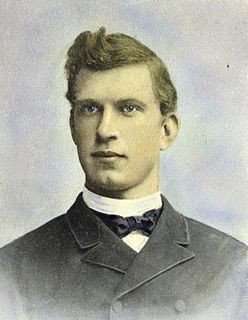Related Research Articles
Protestant Christianity entered China in the early 19th century, taking root in a significant way during the Qing dynasty. Some historians consider the Taiping Rebellion to have been influenced by Protestant teachings. Since the mid-20th century, there has been an increase in the number of Christian practitioners in China. According to a survey published in 2010 there are approximately 40 million Protestants in China. As of 2019, Fenggang Yang, a sociologist of religion at Purdue University, estimated that there are around 100 million Protestant Christians in China. Other estimates place the number of Protestant Christians at around 40-60 million

In the early 19th century, Western colonial expansion occurred at the same time as an evangelical revival – the Second Great Awakening – throughout the English-speaking world, leading to more overseas missionary activity. The nineteenth century became known as the Great Century of modern religious missions.

The Swedish Evangelical Mission (SEM) is an independent, low-church, New Evangelical movement within the Church of Sweden. It emphasizes the importance of lay involvement in the church and is rooted in 19th-century Swedish revivalism and the Mission Friends movement.

Christianity in Mongolia is a minority religion. As of 2005, the United States Department of State reports that approximately 24,000 Christians live in Mongolia's capital, Ulaanbaatar, which is around 2.5 percent of the entire registered population of the city. There are 196 churches by the year 2018.

The Chinese Pavilion, located in the grounds of the Drottningholm Palace park, is a Chinese-inspired royal pavilion originally built between 1753 and 1769. The pavilion is currently one of Sweden's Royal Palaces and a UNESCO World Heritage Site.
International Ministries is an international Baptist Christian missionary society. It is a constituent board affiliated with the American Baptist Churches USA. The headquarters is in King of Prussia, Pennsylvania, United States.

American Methodist Episcopal Mission was an American Methodist missionary society that was involved in sending workers to countries such as China during the late Qing Dynasty.
Presbyterian Mission Agency is the ministry and mission agency of the Presbyterian Church (U.S.A.). Founded as the Western Foreign Missionary Society by the Presbyterian Church in the United States of America in 1837, it was involved in sending workers to countries such as China during the late Qing Dynasty and to India in nineteenth century. Also known as the Foreign Missions Board in China, its name was changed by the Old School body during the Old School–New School Controversy to the Presbyterian Board of Foreign Missions.
The Berlin Missionary Society (BMS) or Society for the Advancement of evangelistic Missions amongst the Heathen was a German Protestant (Lutheran) Christian missionary society that was constituted on 29 February 1824 by a group of pious laymen from the Prussian nobility.
The Church of England Zenana Missionary Society, also known as the Church of England Zenana Mission, was a British Anglican missionary society established to spread Christianity in India. It would later expand its Christian missionary work into Japan and Qing Dynasty China. In 1957 it was absorbed into the Church Missionary Society (CMS).

John Törnquist was a Swedish missionary. He served with the Swedish Missionary Society in Chinese Turkestan.

Carl Joseph Fast was the second Swedish missionary sent to China and the first Protestant missionary murdered in Fuzhou.

Peter Fjellstedt was a Swedish Nyevangelist missionary and preacher who founded the Fjellstedt School and Evangeliska Fosterlands-Stiftelsen.
The Scandinavian Alliance Mongolian Mission was a Scandinavian Protestant Christian missionary society that was involved in sending missionaries to Mongolia and China during the late Qing Dynasty.

Johan Alfred Rinell was a Swedish missionary sent by the Baptist Union of Sweden to China.

Pietisten was a Swedish Christian monthly publication "for religious revival and edification", founded in January 1842 by the Scottish Methodist minister George Scott, who had immigrated to Sweden, and edited by preacher Carl Olof Rosenius until his death in 1868, after which the editorship was taken over by Paul Peter Waldenström. In the last years, the editorial staff included Janne Nyrén (1914–1915), Johan Peter Norberg, Theodor Andersson and Jakob Emanuel Lundahl (1918). Around 10,000 copies of the journal were published between 1853 and 1865. The journal was for the Mission Friends but was spread widely: selections were copied, translated, and published freely at the time. A Finland-Swedish version entitled Den evangeliska budbäraren was also published.
The Swedish Mission Society, was a Swedish Christian organization to promote mission work among the Sámi in Sweden.
Evangelisk Luthersk Mission – Bibeltrogna Vänner (ELM) is a Christian low-church mission organization part of the Church of Sweden, which is active in Sweden and abroad.
Per August Ahlberg was a Swedish revivalist pastor and missionary who made a large impact on the spiritual environment of Småland, Sweden, founding a number of mission schools for colporteurs.
References
- Historik - History of Svenska Missionen i Kina and Svenska Mongol- och Japanmissionen (Swedish)
- Evangeliska Östasienmissionen -- Mongolmissionen i Sverige(Swedish)
